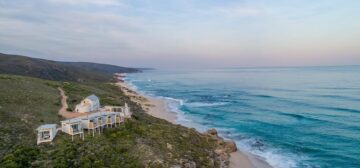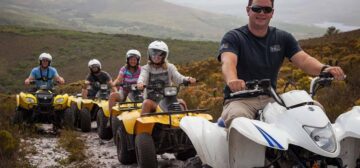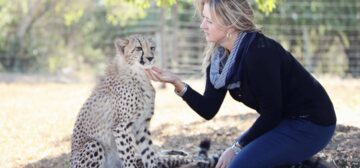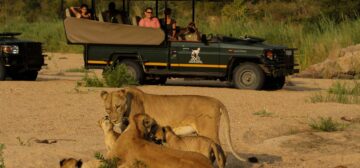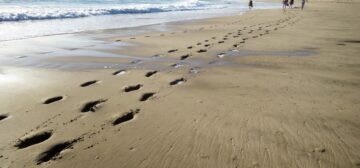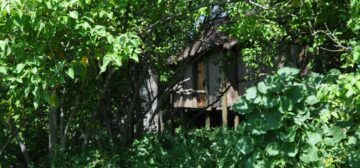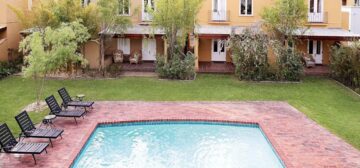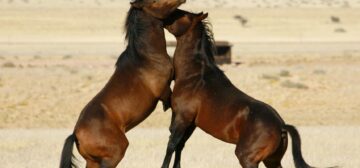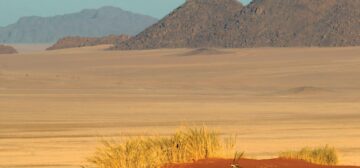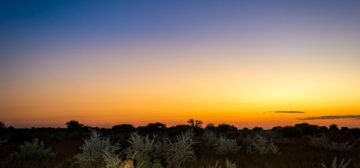South Africa
South Africa is a huge and varied country, spanning the tip of the continent from west to east and encompassing many different ecosystems. The western coastline offers rugged scenery overlooking the wild Atlantic, which blends with the calmer Indian Ocean at Cape Point.
General Information
The east coast beaches offer excellent surfing and swimming opportunities from safe and unspoiled beaches. Inland, the landscape varies from the beautiful Drakensberg Mountains to extensive wilderness areas with excellent wildlife.
Travel via self-drive safaris, fly-in holidays or guided tours here is safe and relatively uncomplicated, the infrastructure is excellent with well-maintained main roads, frequently situated fuel stations and a wide variety of shops and accommodation establishments.
South Africa has so much to offer in terms of wildlife safaris, beach holidays, family adventures, activities, cultural and heritage tours, vineyards, hiking trails, diving and snorkelling, and much, much more! One of the best ways to travel through South Africa is on a self-drive holiday. The Garden Route is one of the most well-known choices, and many visitors begin this route in Cape Town where they can enjoy a trip to Robben Island, Table Mountain, Cape Point, Boulders Beach penguin colony, Stellenbosch and Franschhoek wine regions, Kirstenbosch botanical gardens and the many beaches of Camps Bay, Llandudno, Bantry Bay and Clifton.
Geography – Environment
South Africa is a huge country, spreading for just less than 2000 km north to south and around 1500 km west to east. The climate is mostly dry and sunny as the majority of the country lies just south of the Tropic of Capricorn.
Three distinct ecosystems can be identified within the country; the vast inland plateau (‘highveld’), the great escarpment, and the narrow coastal plain (‘lowveld’). South Africa is home to an amazing variety of flora and fauna taking advantage of every niche including the Atlantic & Indian Ocean coastlines, grassy plains and lush meadows, and the mountains of the Drakensberg. This country boasts one of the World’s floral kingdoms within its borders, the only country in the world to do so. The Cape Floral Kingdom is found in the Western Cape and is home to the unique ‘fynbos’ (fine bush) vegetation of which the Protea, South Africa’s National Flower, is one species. There are approximately another 8500 fynbos species including many Erica and heath varieties.
Succulent species such as euphorbias, aloes and annuals, can be found in the drier areas of the country and meadows of wild flowers are a famous visitor attraction each spring in the Namaqualand region. South Africa is home to many animal and bird species, including the ‘Big 5’ (rhino, elephant, lion, leopard & buffalo). Visitors have an excellent chance of seeing these animals in the many private game reserves as well as the National Parks. Kruger National Park is one of the longest established wildlife areas in Africa. South Africa is also home to an amazing variety of birds, including spectacular flocks of flamingos, striking Ostrich, coastal waders, plains and forest species.
History, Culture and Politics
Historians believe that the first people to settle in the area that is now South Africa were the San Bushmen, around 100,000 BC. These nomadic people lived a generally peaceful and isolated existence until the widespread settlement of Khoikhoi farmers around 80,000 BC. Bantu tribes arrived in the area in the 3rd century AD moving in from the north. Over time, the San have virtually disappeared as a separate race in South Africa; disease brought in from outsiders has combined with genocide on behalf of more aggressive peoples to wipe out the majority of the San. Many tribes have also merged their cultures with others through inter-marriage.
Today there are many tribes living throughout the country, the most prominent of these include the Zulus, Xhosa and Ndebele as well as the Afrikaner and European peoples. Modern day religion revolves mainly around Christianity but there is enormous variety with around 4000 African indigenous churches, and sub-sects of the Dutch Reformed Church. The Zion Christian Church has the largest Christian following in the country, members wear a Silver Star on a green background and advocate non-drinking and ‘clean living’. Many people in neighbouring countries, such as Botswana, also adhere to this religion closely. As in much of Africa, Christianity mingles with ancestor worship and traditional values.
The Portuguese explorer Bartholomew Diaz first rounded the Cape of Good Hope in 1487, and a Dutch settlement was established at the Cape in 1652. In 1688 French Huguenot’s arrived at the Cape armed with extensive wine producing experience. Their influence is still keenly felt! However, colonial influence did not occur on any kind of large scale until the arrival of the British and the Dutch in the early 19th century.
Development around the Cape area was mainly undertaken with British rule. From the 1820’s, the Boer settlers were becoming increasingly dissatisfied with this fact, and began to move northwards into largely unexplored territory on what became known as the Great Trek. The first stopping point was an area near the current Bloemfontein in 1838 where the Boers hoped to establish a republic.
The leader of this republic, Retief, approached the Zulu King Dingaan who agreed to allow the Boer to establish their republic here. Unfortunately for the trek participants, the agreement was a trap and all were massacred immediately after signing the land title deed. There followed a revenge attack which left 3000 Zulus dead in the battle of Blood River. When the Boers later moved into Mgungundlovu and found the deed granting them Retief’s republic, they moved into this area.
The republic was short lived however, as the British annexed the area in 1843 and most of the Boer population moved northwards into the Transvaal. Between 1852 & 1854 the Transvaal & Orange Free State were granted independence from British rule, unfortunately the politics of the region were constantly unstable with the Boers often at war with the local Basotho tribe who were sometimes given help by the British, adding to animosity between the two colonial powers.
The Transvaal & Orange Free State both depended entirely on cattle for income, and boasted no industry, very little agriculture and small Boer populations. Just as the areas were beginning to settle into workable communities, diamonds were discovered in Kimberley in 1869 and the British again annexed the area, hence compounding existing tensions. The new mines led to a rush of European immigrants and a migration of labour from all over the country. The Boers became angry that the republics were missing out on the economic benefits of these mines and the resultant unsettled feelings within the British rule led to the Transvaal being annexed by the British in 1877.
Rebellion followed and the first Anglo-Boer war resulted in a massive Boer victory at the Battle of Majuba in 1881. The Boers regained a certain amount of independence and established the ZAR, (Zuid-Afrikaansche Republiek). The situation deteriorated further with the discovery of gold in Witwatersrand, near the present day Johannesburg. More foreign workers and local people moved into the area drawn by promises of work, although these immigrants were not allowed any vote within the communities. The Boer population mounted another rebellion against the British who eventually brought in Lords Roberts & Kitchener with an army of 450,000. Against 80,000 Boers, the British gained the upper hand very quickly and the Boers were forced to give way.
A new kind of war began, with Boer countryside commandos doing their best to cause disruption and chaos within British controlled areas. Since no official army could be identified, the British took revenge by removing women and children to concentration camps where around 26,000 people died before the war was over. By 1902 the strain was taking its toll and a peace treaty was signed which gave power of the Boer republics to the British. Boers flooded back to the cities to compete with the local population for work. The English language dominated and was made an official language along with Dutch. It was not until much later that Afrikaans was also given this distinction. The British realised that they had to attempt some kind of co-operation with the Boers and a ‘representative government’ was established in 1906 (not actually representative at all since none of the local black population were allowed to stand for parliament…)
The Union of South Africa was established in 1910, excluding the area which is now Lesotho, Swaziland, Botswana (Bechuanaland) & Zimbabwe (Rhodesia). The first election was held, and won by the South Africa National Party, a coalition of Boer groups under the leadership of General Louis Botha and General Jan Smuts. Botha became the first Prime Minister.
Repressive legislation was implemented which included rules such as no striking by black workers and increased laws governing the movements of the black population. These laws prompted Pixley ka Isaka Seme to form the South Africa Native Congress in 1912, later becoming the ANC in 1923. In 1913 the Natives Land Act allocated 7.5% of the land area to the black population (approximately 70% of South Africa’s people). Squatters were moved from traditional land to overcrowded reserves or cities.
In 1914 South Africa found itself at war with Germany, by default in its role as part of the British empire. Involvement on the side of the British prompted the last major Boer rebellion. South West Africa (now Namibia) was taken from German control and became part of South Africa under mandate from the League of Nations following the end of WWI. In 1924 the National Party, under the leadership of the staunch supporter of Afrikaner independence, Hertzog, merged with the South African National Party to form a fusion government. Jan Smuts became deputy to Hertzog, but this joint government was rejected by Dr. D. F. Malan and followers who formed the Purified National Party and became known as the ‘Broederband’ of Afrikaans brotherhood.
During the Second World War, South Africa’s economy boomed and the black urban population nearly doubled with enormous squatter camps building up outside the cities. The National Party won the 1948 election on an apartheid platform; apartheid literally means a ‘state of being apart’. Power was held in this way until 1994. Previous laws were strengthened and every aspect of life was made separate, from residential areas to public amenities with each member of the black population being required to carry a pass at all times and having their movements vigorously restricted.
In 1949 the ANC began to move towards open resistance and more physical methods of objection to this unethical state of government. Illegal strikes were organised along with protest marches and public disobedience. As part of a 1955 congress, a number of organisations including the ANC and the Indian Congress adopted a Freedom Charter with a vision of a non-racial and democratic state.
The situation escalated enormously with the Sharpville riots in 1960 when police opened fire on demonstrators and many black protestors were killed. Shortly afterwards, the ANC and the PAC (Pan African Congress) were banned and a vote was taken on withdrawing from the British Commonwealth. A slim majority voted in favour of this and South Africa became the Republic of South Africa in May 1961. At this point Nelson Mandela became the leader of the underground ANC and Oliver Tambo was sent abroad to establish and promote the organisation in exile. Mandela was arrested in July 1963.
The Homelands Policy was brought into place around this time; another separatist policy which was promoted under the guise of providing the black population with their own, self-governed, states. These ‘traditional’ tribal areas were in fact the least desirable land areas in terms of agriculture, industry or any other viable means of making a living. Often, people were removed to tribal areas bearing no resemblance to their traditional background. No infrastructure was provided in the Homelands and the land areas were incapable of producing enough food to keep the population self-sufficient. Once again, a tiny percentage of the land area (13%) was assigned to 75% of the population. Residents were not allowed outside their homeland without a pass and prior permission.
By 1980 South Africa (along with South West Africa) was the last remaining white controlled state in Africa. Pressure was rising and sanctions were being steadily increased by countries abroad. The ANC and PAC had direct support from black African governments (except Malawi & Swaziland). Between 1977 & 1988 the South African Defence Force undertook some major attacks in Angola, Zimbabwe & Moçambique in an attempt to defend their position. By 1985 the country was under a state of emergency with censored media and up to 30,000 people detained without trial. Foreign banks refused to roll over government loans, sanctions continued to increase and the value of the Rand collapsed.
In 1989 Botha was replaced by FW De Klerk who realised the vital importance of ending the struggles within the country. In 1990 the ANC, PAC & Communist Party were legalised, and Nelson Mandela was released from prison after 27 years. This was also the year of Independence in South West Africa, which became Namibia. An interim government of National Unity ruled South Africa until the 1994 elections, the first free and fair of the country’s history. The ANC won with just under 63% of the vote.
In post-apartheid South Africa, unemployment has been extremely high as the country has struggled with many changes. While many black people have risen to middle or upper classes, their overall unemployment rate worsened. Poverty among whites, previously rare, increased. While some have attributed this partly to the legacy of apartheid, increasingly many attribute it to the failure of the current government’s policies. In addition, the current government has struggled to achieve the monetary and fiscal discipline to ensure both redistribution of wealth and economic growth. Since the ANC-led government took power, the United Nations Human Development Index of South Africa has fallen, while it was steadily rising until the mid-1990s. Some may be attributed to the AIDS pandemic, and the failure of the government to take steps to address it in the early years.
Health & Malaria
Malaria is not present throughout the whole of South Africa, but areas where prophylaxis should be taken include KwaZulu-Natal, areas of the north coast, Kruger National Park and the Botswana & Mozambique border areas. Your doctor can advise you on the best type for the area of travel and your personal requirements. However, taking prophylaxis will not guarantee that you will not contract malaria! The best way to avoid malaria is to avoid being bitten by the mosquitoes that carry the parasite. Only the females of one species of mosquito (Anopheles) carry the tiny parasite, and the greatest incidence of malaria is in areas of high population where there are many people for the mosquito to bite and pass the parasite between.
Mosquitoes usually bite between sunset and sunrise, so make sure that you are covered up during this time! Wear loose fitting, long sleeved shirts and trousers, use a good insect repellent and sleep underneath a mosquito net or in a tent/ room sealed with netting.
If you do develop flu-like symptoms, or feel at all unwell, during your holiday or after your return home, you must make sure that your doctor knows that you have recently travelled in a malaria area. Malaria is not a serious problem provided people take adequate precautions and seek advice and treatment immediately if they feel unwell.
Hospital treatment in large cities of South Africa is good but can be expensive. Medical facilities in rural areas can be basic. In remote areas, air evacuation is sometimes the only option for medical emergencies. For this reason, you must make sure that comprehensive travel insurance is taken out before you travel, this insurance should cover any medical expenses, air evacuation and repatriation if necessary. It must also cover delay, curtailment, or cancellation of your holiday or any associated flights.
Water
The water is safe to drink throughout most of South Africa. In the remote areas, purification tablets or bottled mineral water should be used. Plenty of water must be drunk to prevent dehydration. We recommend 2-3 litres minimum, excluding beverages such as tea, coffee, juice and alcohol. Dehydration can cause very serious problems, it is totally avoidable, so don’t let this spoil your holiday!
Climate
• Rainy season: Late November to late March in most of the country. The Western Cape has more of a temperate climate with rain all year round and a cooler average temperature than the tropical regions of the north and east coast.
• Summer: October to March with a high of 30° C and a low of 17° C.
• Winter: June to September with a high of 20° C and a low of 5° C.
Season Summer rainy season (October to March)
Pros: Lush green landscape, quieter tourism except for Christmas & Easter.
Cons: Wildlife is more spread out, very warm temperatures in the tropical areas, activities may be interrupted by rain.
Season Winter dry season (June to September)
Pros: Higher chances of excellent game viewing, cooler, few mosquitoes, great spring wildflowers in September, whale watching at the coast.
Cons: Busiest tourism period, especially in the SA school holidays of July & August, cold mornings and evenings, drier environment.
Our personal preference would be for either March – April, except Easter, or September – October as these times are neither too hot nor too cool and the tourist areas are generally quieter. In March-April the game viewing is usually excellent and in September the spring flowers are riotously beautiful, whale sightings are at their best off the coast and the rains have not usually begun.
Photography
Bring plenty of memory cards and a spare camera battery as these items may not be available in some of the more remote areas of South Africa. A good zoom lens (minimum 200 mm) is essential for wildlife photography.
Clothing
Neutral, muted colours such as khaki, dark green or beige ensure as little disturbance to wildlife as possible whilst on game drives or walks. White or bright colours are not advised, neither are army camouflage uniforms or army hats. Normal beach wear such a shorts & T-shirts are useful for the coast, as are sarongs and hats as the sun is very strong.
Recommended Packing
Neutral coloured casual clothing (shorts/shirts) for everyday wear, stout shoes (with soles thick enough to protect against thorns and for walking), light waterproof jacket for summer, warm jumper/ fleece for winter, warm long trousers for winter, two sets of good casual clothes for evening dining where appropriate, towel, broad brimmed hat, sunglasses, sunscreen, camera, plenty memory cards & spare battery, binoculars, reliable torch, sleeping bag if camping.
It is also worth noting that if you are travelling by light aircraft or as part of a guided safari, you should carry no more than15kg of luggage in a soft bag for ease of packing.
Currency
The South African Rand is split into 100 cents. US$ can be easily exchanged throughout the country, as can Euro and pounds sterling. Most hotels, lodges & shops accept credit cards, mainly Visa or Mastercard.
Visa Requirements
Your passport must be valid for no less than 30 days after your intended departure from South Africa and you must have at least two blank pages in your passport. Visitors from most British Commonwealth countries and some others can obtain tourist visas for up to 3 months at the border. Please contact us for details regarding your personal visa requirements.






